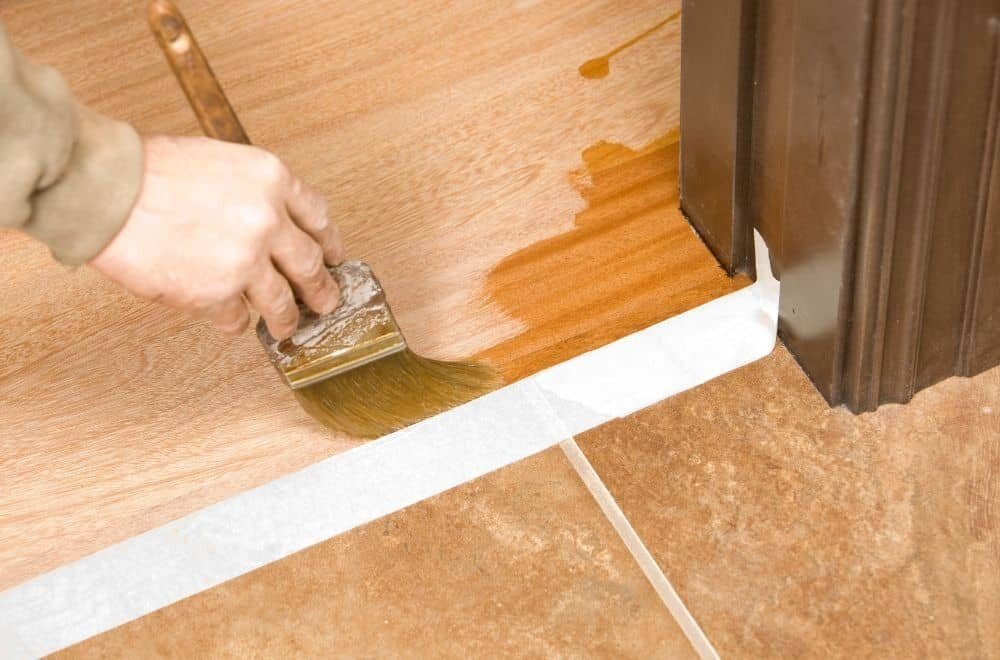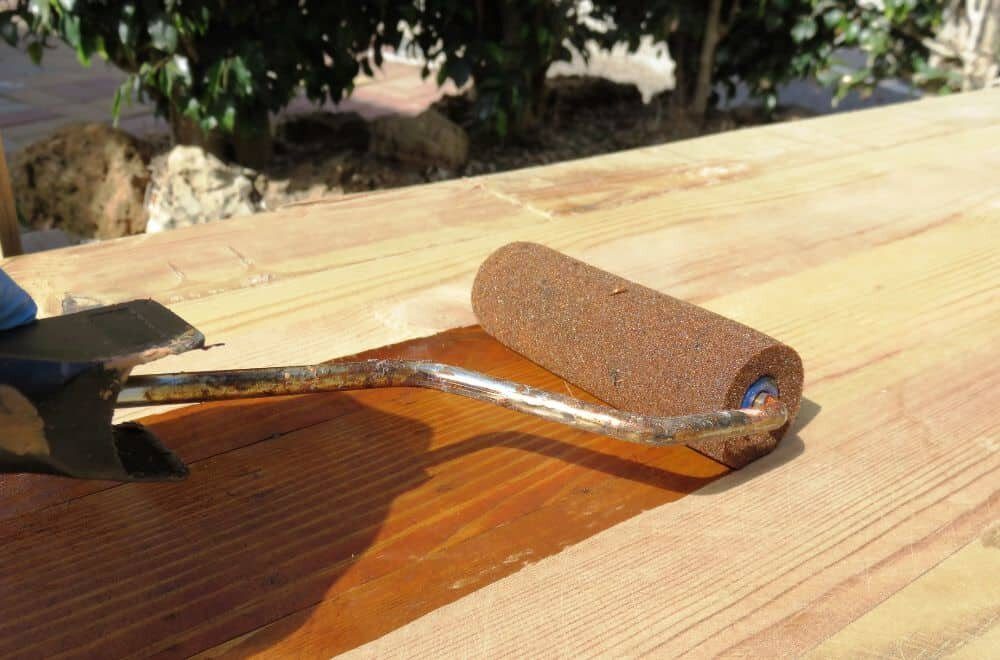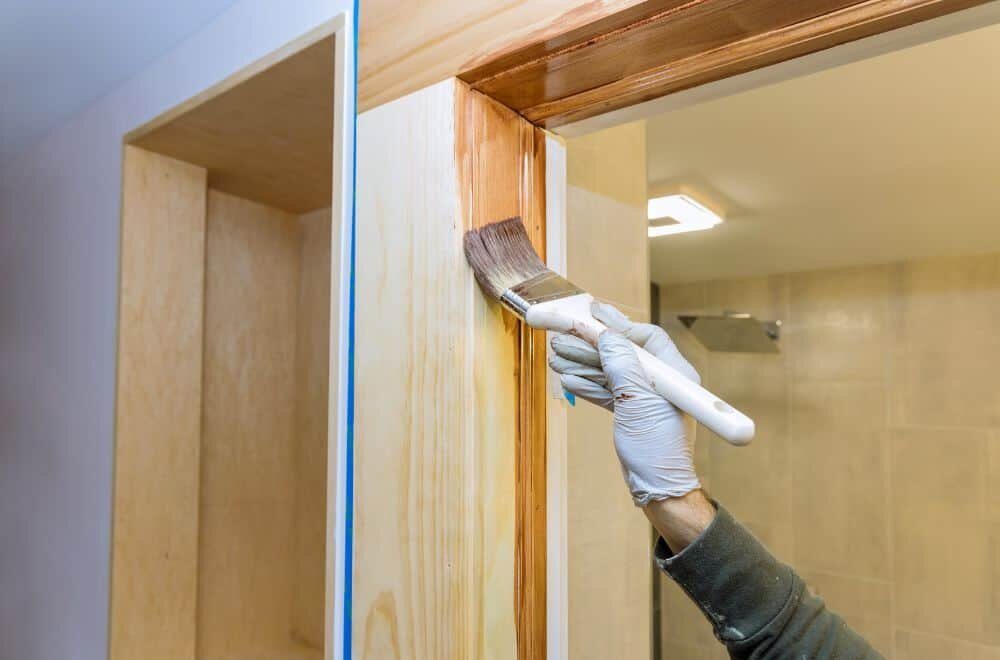Are you wondering if you can apply polyurethane over painted wood? The answer is yes, you can. However, there are a few things to keep in mind to ensure a successful outcome. In this article, we’ll explore the process of polyurethaning over painted wood and provide some tips to help you achieve the best results.
Before applying polyurethane over painted wood, it’s important to make sure the paint is fully cured and clean. This will help ensure a smooth and even finish. Additionally, it’s important to choose the right type of polyurethane. Both oil-based and water-based polyurethane can be used over painted wood, but oil-based polyurethane may cause discoloration over time, so be cautious when using it. With these considerations in mind, let’s take a closer look at the process of applying polyurethane over painted wood.
Understanding Polyurethane

Polyurethane is a synthetic product that is commonly used as a protective coating for wood surfaces. It is a durable and flexible material that can help to extend the lifespan of your painted wood surfaces. In this section, we will discuss the benefits of polyurethane and the different types available.
Benefits of Polyurethane
Polyurethane offers several benefits when used as a protective coating for painted wood surfaces. These benefits include:
- Protection against weathering and UV damage
- Enhanced and deepened colors
- Increased resistance to scratching, impact, and general wear
- Easy cleanup
Types of Polyurethane
There are two main types of polyurethane: oil-based and water-based. Each type has its own advantages and disadvantages.
Oil-Based Polyurethane
Oil-based polyurethane is known for its durability and resistance to water and chemicals. It also tends to give a warm, amber tone to the wood surface. However, it has a longer drying time and can emit strong fumes during application. It is also more difficult to clean up.
Water-Based Polyurethane
Water-based polyurethane dries faster and emits fewer fumes during application. It also has a clear finish that does not alter the color of the wood surface. However, it is less durable than oil-based polyurethane and may require more coats for adequate protection.
In conclusion, polyurethane is a valuable protective coating for painted wood surfaces. Understanding the benefits and types available can help you choose the best product for your specific needs.
Painted Wood and Polyurethane
If you have a painted wood surface that needs additional protection, applying polyurethane over the paint can be a great option. However, there are some important considerations to keep in mind to ensure the best results.
Preparation of Painted Wood
Before applying polyurethane over painted wood, it is crucial to ensure that the paint is fully cured and clean. Any grease stains, dirt, or other filth needs to be washed off before you can apply the first coat of polyurethane. Use a soft sponge or rag and a powerful detergent to clean up the painted surface. You can take a ½ cup of trisodium phosphate and mix it with warm water.
After cleaning, it is important to scuff the surface with 220-grit sandpaper. This helps the polyurethane adhere to the painted surface. Make sure to wipe away any sanding dust with a damp rag or tack cloth.
Compatibility of Polyurethane and Paint
When it comes to applying polyurethane over paint, you can use both oil-based and water-based polyurethane. However, it is important to be cautious of discoloration, especially when using oil-based polyurethane. Some oil-based polyurethane can yellow over time, which can be especially noticeable over light-colored paint.
To avoid discoloration, it is recommended to use a water-based polyurethane over light-colored paint. Additionally, it is important to test the polyurethane on a small, inconspicuous area before applying it to the entire surface.
Overall, applying polyurethane over painted wood can provide additional protection and durability to your surface. Just make sure to properly prepare the surface and choose the right type of polyurethane to avoid any discoloration or other issues.
Application Process

Materials Needed
Before you begin the application process, you will need to gather a few materials. Here is a list of what you will need:
- Sandpaper (120 grit)
- Tack cloth
- Paintbrush or paint sprayer
- Polyurethane
- Gloves
- Safety goggles
- Face mask
Step-by-Step Guide
- Sand the painted surface with 120 grit sandpaper. This will help the polyurethane adhere to the surface. Be sure to sand in the direction of the grain.
- Wipe the surface with a tack cloth to remove any dust or debris.
- Put on gloves, safety goggles, and a face mask to protect yourself from the fumes.
- Apply the polyurethane with a paintbrush or paint sprayer. Be sure to follow the manufacturer’s instructions for application.
- Allow the first coat to dry completely before applying a second coat.
- Sand the surface lightly with 220 grit sandpaper before applying the second coat. This will help the second coat adhere to the first coat.
- Apply the second coat of polyurethane and allow it to dry completely.
- Sand the surface lightly with 220 grit sandpaper before applying the third coat.
- Apply the third coat of polyurethane and allow it to dry completely.
- After the final coat has dried, you can sand the surface lightly with 220 grit sandpaper to remove any imperfections.
- Wipe the surface with a tack cloth to remove any dust or debris.
Congratulations! You have successfully applied polyurethane over painted wood.
Maintenance Tips
Keeping your polyurethane finished painted wood looking its best requires some basic maintenance. Here are some tips to help you keep your surfaces looking their best.
Cleaning and Care
To keep your polyurethane finished painted wood looking clean and shiny, you should clean it regularly. Here are some tips to help you with regular cleaning:
- Use a soft cloth or sponge to wipe down the surface.
- Use a mild soap and water solution to clean the surface.
- Avoid using harsh chemicals or abrasive cleaners that can damage the finish.
- Dry the surface thoroughly after cleaning to prevent water damage.
If your polyurethane finished painted wood becomes dull or scratched, you can restore its shine by applying a new coat of polyurethane. Before applying a new coat, clean the surface thoroughly and lightly sand it to remove any scratches or imperfections.
Touch-Ups and Repairs
Even with regular care, your polyurethane finished painted wood may become damaged over time. Here are some tips to help you with touch-ups and repairs:
- Use a fine-grit sandpaper to lightly sand the damaged area.
- Clean the surface thoroughly to remove any dust or debris.
- Apply a small amount of touch-up paint to the damaged area.
- Allow the touch-up paint to dry completely.
- Apply a new coat of polyurethane to the entire surface to blend the touch-up with the rest of the finish.
By following these simple maintenance tips, you can keep your polyurethane finished painted wood looking its best for years to come.
Common Mistakes to Avoid

When it comes to polyurethane over painted wood, there are a few common mistakes that you should avoid to ensure a successful project. Here are some of the most important things to keep in mind:
Skipping Surface Preparation
One of the biggest mistakes people make when applying polyurethane over painted wood is skipping surface preparation. Before you apply any polyurethane, you need to make sure the surface is clean, dry, and free of any dirt, grease, or other contaminants. If you skip this step, the polyurethane may not adhere properly, and you could end up with a finish that peels or flakes off.
Using the Wrong Type of Polyurethane
Another common mistake is using the wrong type of polyurethane. There are two main types of polyurethane: oil-based and water-based. Oil-based polyurethane is more durable and provides a richer, deeper finish, but it takes longer to dry and can yellow over time. Water-based polyurethane dries faster and is less likely to yellow, but it is not as durable as oil-based polyurethane. Make sure you choose the right type of polyurethane for your project.
Applying Too Thick of a Coat
When applying polyurethane over painted wood, it’s important to apply thin, even coats. If you apply too thick of a coat, the polyurethane may not dry properly, and you could end up with a finish that is uneven or has drips and runs. It’s better to apply multiple thin coats than one thick coat.
Not Allowing Enough Drying Time
Finally, one of the biggest mistakes people make when applying polyurethane over painted wood is not allowing enough drying time between coats. Polyurethane takes time to dry and cure, and if you apply a new coat before the previous coat is fully dry, you could end up with a finish that is tacky or doesn’t adhere properly. Make sure you follow the manufacturer’s instructions for drying time between coats.
Frequently Asked Questions
Can polyurethane be applied over latex paint?
Yes, you can apply polyurethane over latex paint. However, it is important to wait until the paint has fully cured before applying the polyurethane. This usually takes about 30 days. Additionally, it is recommended that you lightly sand the surface of the paint before applying the polyurethane to ensure proper adhesion.
What is the best type of polyurethane to use over paint?
The best type of polyurethane to use over paint is a water-based polyurethane. This type of polyurethane is easy to apply, dries quickly, and is less likely to yellow over time compared to oil-based polyurethane.
Can you put polyurethane over water-based paint?
Yes, you can put polyurethane over water-based paint. However, it is important to wait until the paint has fully cured before applying the polyurethane. This usually takes about 30 days. Additionally, it is recommended that you lightly sand the surface of the paint before applying the polyurethane to ensure proper adhesion.
How do you apply polyurethane to painted wood?
To apply polyurethane to painted wood, first, ensure that the paint has fully cured and the surface is clean and dry. Then, lightly sand the surface of the paint to ensure proper adhesion. Apply the polyurethane using a brush or roller, following the manufacturer’s instructions for application and drying times. Sand lightly between coats, and apply multiple coats as needed for the desired level of protection.
Is polyurethane a good option for protecting painted wood?
Yes, polyurethane is a good option for protecting painted wood. It provides a durable and long-lasting protective finish that can help prevent scratches, scuffs, and other types of damage to the painted surface.
Should I apply polyurethane over painted cabinets for extra protection?
Yes, applying polyurethane over painted cabinets can provide extra protection and help extend the life of the paint job. It is important to ensure that the paint has fully cured before applying the polyurethane and to follow the manufacturer’s instructions for application and drying times.